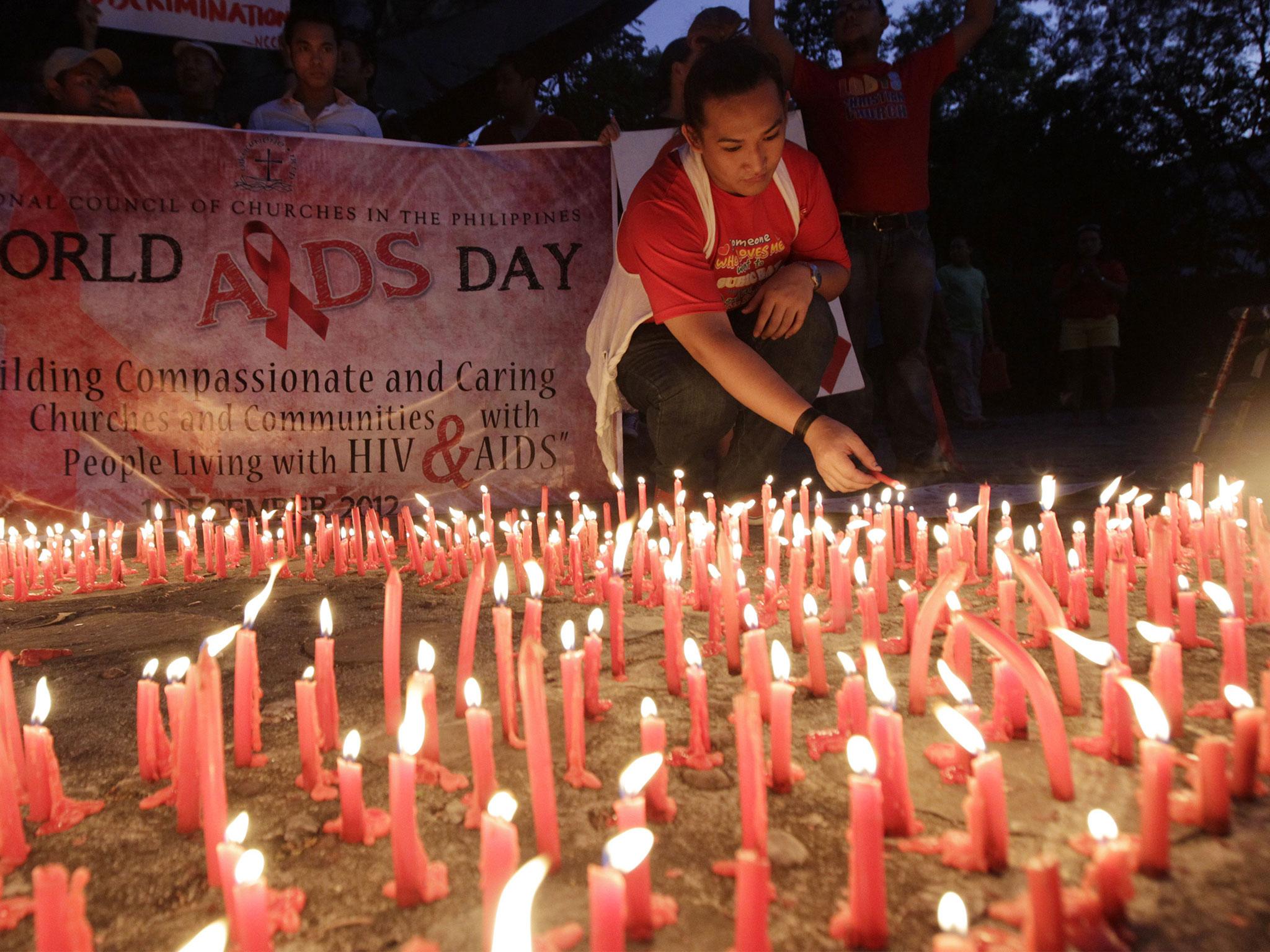HIV strain in Philippines must be better researched if rates of infection are not to explode, scientists warn
‘HIV is not done yet,’ says expert as figures show 56,000 Filipinos now living with condition

A strain of the HIV virus which has become predominant in the Philippines has the potential to spark a new epidemic, scientists have warned.
HIV prevalence among Filipinos has risen sharply in the past decade, at a time when infection rates across the world are beginning to decline.
The United Nations estimates the number of new cases identified in the Philippines each year has risen by 140 per cent since 2010.
Researchers are concerned that HIV subtype AE is proving harder to combat than versions of the virus more commonly seen elsewhere.
The strain is more aggressive, can be more resistant to antiretroviral drugs and progresses to Aids faster than the HIV subtype B generally found in western countries.
“The HIV virus has the potential to transform itself into a new and different virus each time it affects a cell,” Dr Edsel Salvana, director of the Institute of Molecular Biology and Biotechnology at the University of the Philippines told DW.
“There are nearly 100 different subtypes of HIV, with new subtypes being discovered every day.
“Most HIV infections in the Western world are of subtype B. Most of the research that we have on HIV is also on subtype B, though it accounts for only about 12 per cent of all global HIV infections.
“We have discovered that the explosion of HIV in the Philippines is due to a shift from the Western subtype B to a more aggressive HIV subtype AE.”
Dr Salvana added: “Those infected by the HIV subtype AE are younger, sicker patients who are more resistant to antiretroviral drugs. We are also seeing a faster progression to Aids under subtype AE.”
Around 5,000 people in the Philippines were living with HIV in 2006, compared to around 56,000 in 2016, according to UN figures.
The number of new cases being diagnosed has also spiked in recent years, with some 10,000 new cases identified in 2016 alone, giving the country the fastest-growing HIV rate in the Asia-Pacific region.
Dr Salvana warned work done in recent decades to combat the HIV virus risked being undone if more research was not conducted into the new strain.
“HIV is not done yet. We cannot think of HIV as a single virus but as a collection of viruses that are evolving, with a new mutation that can possibly set off a new epidemic.
“The gains that we have made in decreasing HIV infection rates will be short-lived without research and treatment for HIV subtype AE,” he added.
“This is urgently needed. Specifically for the Philippines, we need more scientists willing to do research work on HIV.”
The World Health Organisation has concluded that "insufficient access to prevention and treatment are the main drivers of the HIV epidemic in the Philippines", rather than the predominance of the AE strain.
UNAIDS, the United Nations' programme on HIV and Aids, released a statement to reassure the public that there is "no new strain of HIV" in the Philippines.
"The variants of the virus found in the Philippines have not changed and are similar to the strains of the virus found in many parts of Asia and in other parts of the world.
"In addition, there is no conclusive evidence that the strains of the virus found in the country are more infectious than other virus variants, nor is there evidence that they are resistant to the current treatment regimens available."
*Update. An earlier version of this article wrongly referred to a "new" strain of HIV circulating in the Philipines, which was resistant to existing drugs. The strain is not, in fact, new; and while some sufferers may develop drug resistance if they are unable to take their medication regularly, the AE strain is not resistant to existing therapies per se.
Join our commenting forum
Join thought-provoking conversations, follow other Independent readers and see their replies
Comments